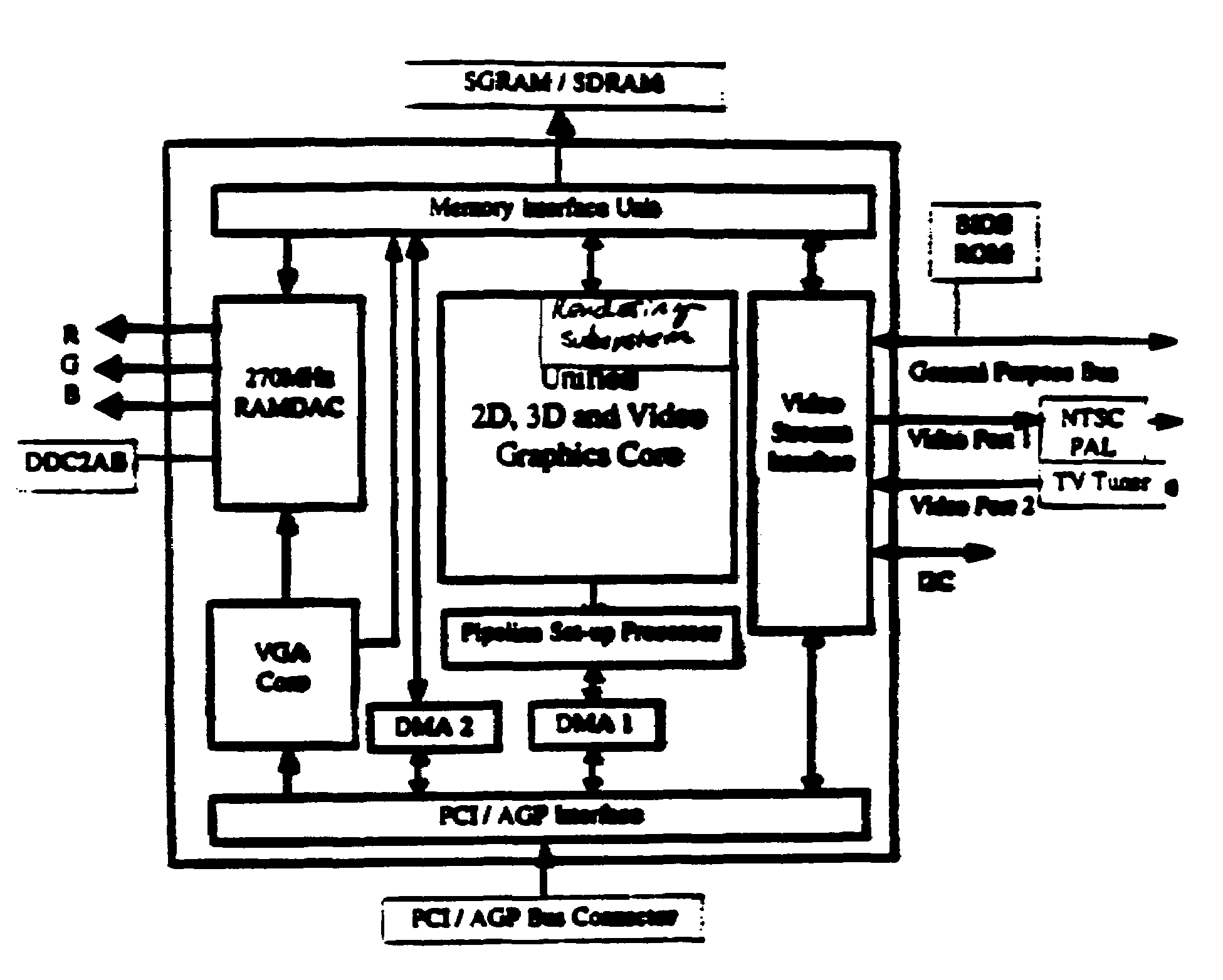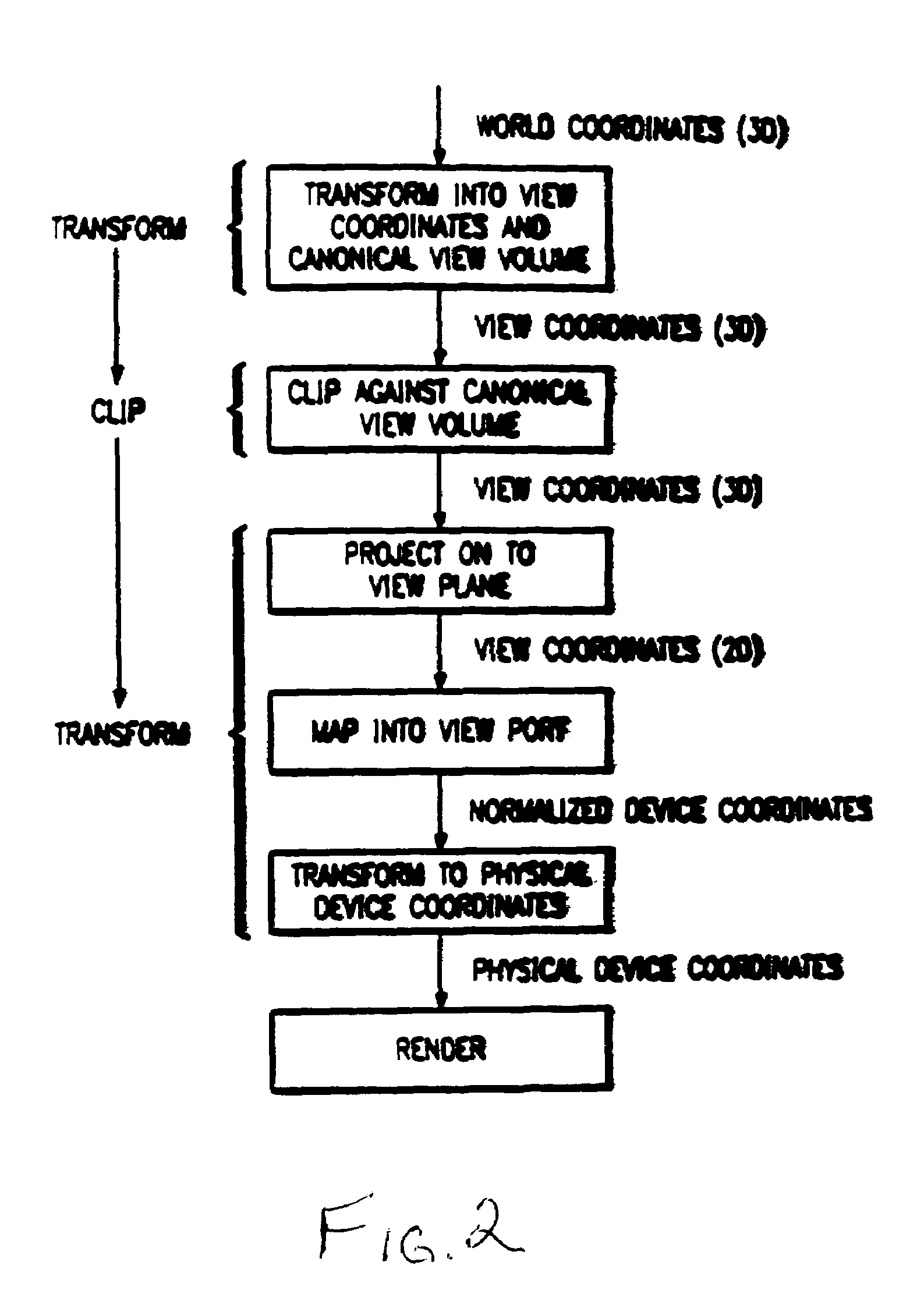Autonomous address translation in graphic subsystem
a graphic subsystem and autonomous technology, applied in the field of computer graphics rendering systems and methods, can solve the problems of still large amount of data manipulation to be done, rendering is a computationally intensive operation, and adding polygons necessitates paying the price of having to manipulate more geometry
- Summary
- Abstract
- Description
- Claims
- Application Information
AI Technical Summary
Benefits of technology
Problems solved by technology
Method used
Image
Examples
Embodiment Construction
[0080]The numerous innovative teachings of the present application will be described with particular reference to the presently preferred embodiment (by way of example, and not of limitation).
[0081]The following pages give details of a sample embodiment of the preferred rendering accelerator chip (referred to as “P3” in the following document, although not all details may apply to every chip revision marketed as P3). Particular attention will be paid to the Texture Read Unit of this chip, where many of the disclosed inventions are implemented. Commonly-owned U.S. application Ser. Nos. 09 / 322,828, 09 / 280,250, and 09 / 266,052 provide various other details of the contexts within which the claimed inventions are most preferably implemented, and are all incorporated herein by reference. The present application is one of nine applications filed simultaneously, which are all contemplated to be implemented together in a common system. The other applications are Ser. Nos. 09 / 591,533, 09,591,5...
PUM
 Login to View More
Login to View More Abstract
Description
Claims
Application Information
 Login to View More
Login to View More - R&D
- Intellectual Property
- Life Sciences
- Materials
- Tech Scout
- Unparalleled Data Quality
- Higher Quality Content
- 60% Fewer Hallucinations
Browse by: Latest US Patents, China's latest patents, Technical Efficacy Thesaurus, Application Domain, Technology Topic, Popular Technical Reports.
© 2025 PatSnap. All rights reserved.Legal|Privacy policy|Modern Slavery Act Transparency Statement|Sitemap|About US| Contact US: help@patsnap.com



